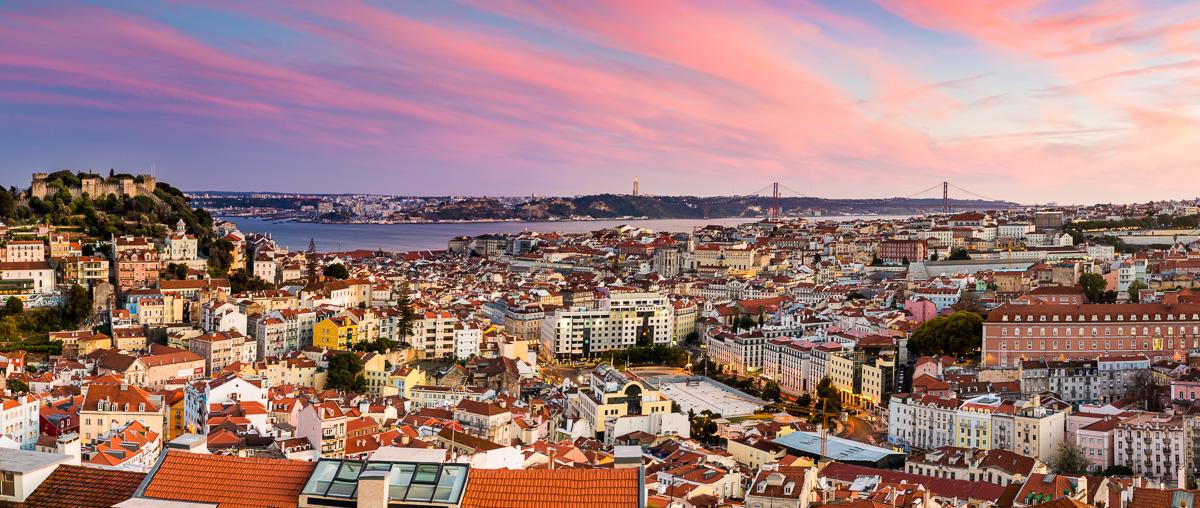Jordan & Ben are getting married!
Explore Lisbon

Avenida da Liberdade
***This is where the hotel block is and is both central and easy for transportation.*** "Avenida da Liberdade has a history as one of Lisbon’s most eye-catching neighbourhoods, built as a park in the 18th century and converted in the late 19th century into the high-end boulevard that it is today. Designed in the image of Paris’s Champs-Elysees, it’s filled with grand buildings that house luxury shopping, five-star hotels, a range of restaurants and floral pedestrian walkways decorated with kiosk cafés and the traditional Portuguese tile." -www.culturetrip.com
Alfama
"With its cobblestone alleyways, hilltop panoramas and backstreet restaurants, Alfama is one of Lisbon’s most enchanting neighbourhoods. Though it’s well-known and much-visited, this charming spot has still managed to retain a distinct village-like charm, meaning there’s plenty yet to discover in this captivating neighbourhood." -www.culturetrip.com
Bairro Alto
"If you want to know where everyone is on Saturday night, chances are good that it’s Bairro Alto. This windy, hilly neighbourhood is filled with bars and has a bohemian vibe, making it one of the coolest places in the city. There are also restaurants, cafés, tattoo parlours and hostels in addition to the ever-present historical landmarks" -www.culturetrip.com
Alcântara
"Technically, Alcântara is a parish of the district of Lisbon but locals consider it part of the city. Situated between downtown and Belém, it’s a neighbourhood along the river where visitors will find Docas de Santo Amaro (a dock filled with bars and restaurants) and the LX Factory (a renovated factory building complex that’s been converted into shops, offices, restaurants and more)." -www.culturetrip.com
Baixa & Rossio
"The most tourist-friendly neighbourhood during the day is that between Baixa and Rossio, where many of Lisbon’s main landmarks, shopping and dining opportunities can be found. Although ‘downtown’ is a term used loosely to describe a few neighbourhoods, this is Lisbon’s real downtown area. It is also the main part of the city that was destroyed during the famous earthquake of 1755 and rebuilt in the late 18th century. A few key sites include Livraria Bertrand (the oldest bookstore in the world still trading), the elaborate Brasileira café, the elegant, bright-yellow Praça do Comércio and the Rossio train station." - www.culturetrip.com
Parque das Nações
"Parque das Naçoes is a modern area where the Oriente train station and the Oceanário de Lisboa are located. It was built to accommodate Expo ’98 and stands today as a living memory of that event. A number of restaurants and bars can be found on the strip along the river, as well as clubs." -www.culturetrip.com
Cais do Sodre
"The last terminal metro stop (before heading towards Alcântara and Belém) is in Cais do Sodré. From here, travellers can hop on a ferry and sail across the Tejo River to cities such as Almada on the other side. Like Bairro Alto, Cais do Sodré is a cool neighbourhood to enjoy beer and catch up with friends. The Time Out Market, or Mercado da Ribeira, is one of the city’s main food courts that offers everything from traditional meals to trendy treats and bakeries. It is also the home of the colourful Pink Street, full of bars, restaurants and artistic personality" - www.culturetrip.com
Príncipe Real
"This trendy neighbourhood is west of Avenida da Liberdade and north of Bairro Alto. The buildings here are grander than many other neighbourhoods in Lisbon, giving it an expensive air; its name even translates into “royal prince”. Príncipe Real is a residential neighbourhood but doubles as a social district, filled with stores and gardens." - www.culturetrip.com